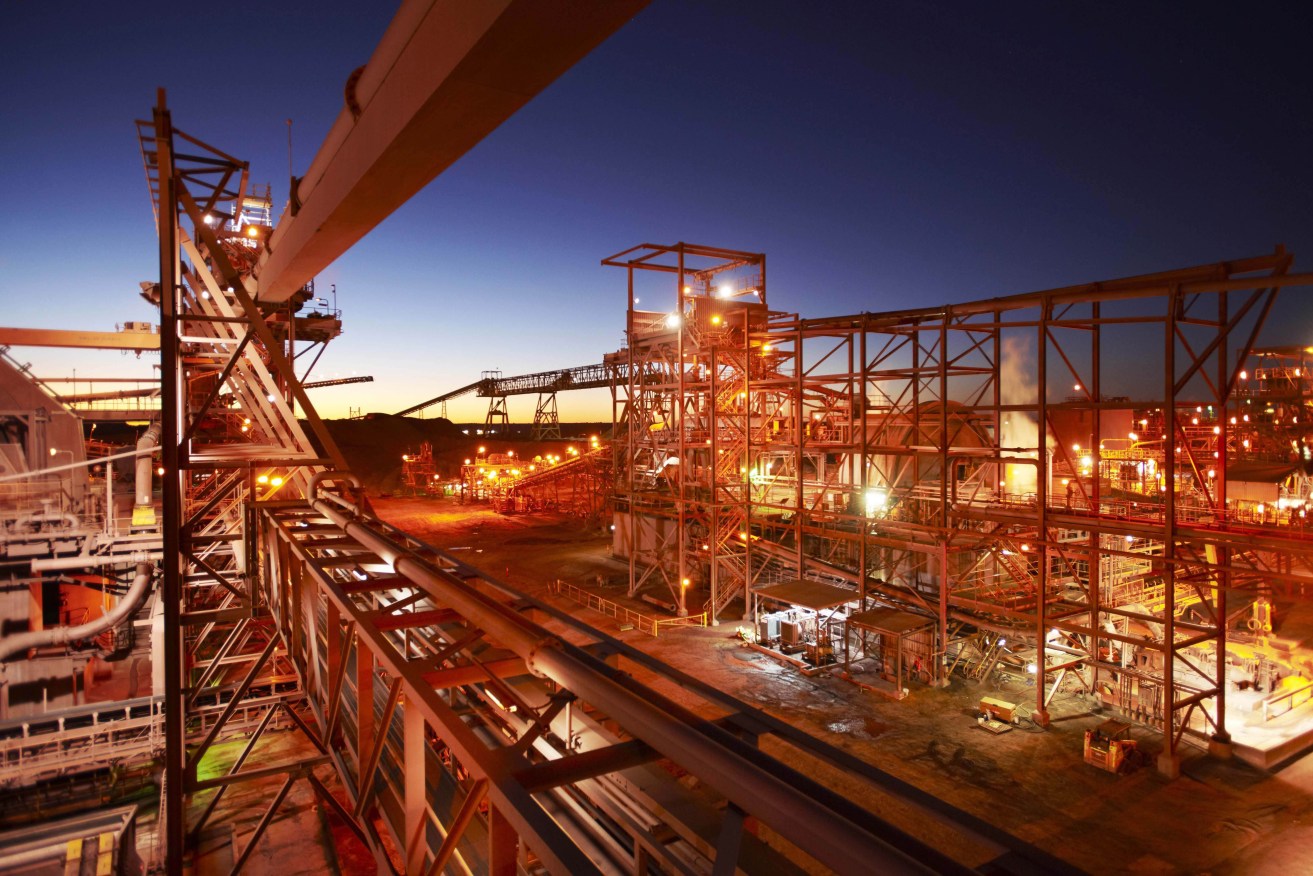BHP Billiton to slash costs at Olympic Dam
Oversupply has forced BHP Billiton to cut costs across its copper division, with the biggest chop aimed at South Australia’s Olympic Dam.

The Olympic Dam expansion involves a staged increase in copper production from 200,000 to 350,000 tonnes per annum.
President of the copper division Daniel Malchuk announced overnight plans to lower copper unit costs to $US1.08 per pound in the 2017 financial year.
The biggest fall in costs is expected to be at Olympic Damn which is targeted to drop almost half to $US1 per pound.
“Olympic Dam unit costs are expected to fall 48 per cent by the end of the 2017 financial year … repositioning the asset at the low end of the cost curve,” Malchuk said.
“Over the same period, Spence unit costs are expected to fall 10 per cent to 87 US cents per pound.”
Malchuk said low-cost “debottlenecking” projects would release latent capacity to support sustainable production of approximately 200 ktpa at Olympic Dam and the Spence copper project in Chile from the 2016 financial year.
He said the company was playing the long game with Olympic Dam and operations would pick up when the market improved.
“We are also pursuing further growth opportunities which offer attractive returns.
“The Spence growth option has advanced to the feasibility stage with the potential for first production in the 2020 financial year.
“And we continue to create staged optionality for substantial long-term growth at Olympic Dam.
“These opportunities will enable us to bring on production at a time that coincides with an expected price recovery.”
Malchuk said the move would help its copper production grow to approximately 1.7 Mt at “very low cost”.
He said while near-term oversupply in the copper market had weighed on current prices, he expected a significant supply deficit by 2020.
“We see a number of factors creating the conditions for a significant supply deficit by the end of the decade.
“Grade decline, falling investment across the sector, the lack of greenfield projects and challenges accessing sustainable power and water are all likely to constrain industry supply.
“Meanwhile we expect robust demand from China and non-OECD countries to add to the deficit.”
Malchuk said BHP Billiton’s copper portfolio comprised of large, long-life assets competitively positioned on the cost curve.
“We have the industry’s largest copper resource and our business will gain momentum over the next two years with lower costs and higher production across our major assets as we safely improve productivity.
“At Escondida [Chile], no major investment is required to sustain an average 1.2 million tonnes per annum of production capacity for the decade from the 2016 financial year, and the asset is expected to generate strong free cash flow through the cycle.
“This strong recovery will be supported by our differentiated water and power solutions in Chile which will provide us with a significant competitive advantage.”
The announcement comes after BHP and its joint venture partner Vale are still grappling with the financial and economic fallout of a deadly tailings dam burst last month at its Brazilian iron ore operations.
BHP has already contributed $1 billion to the clean up at Samarco and is inspecting tailing dams at its other iron ore, copper and coal operations around the world.




